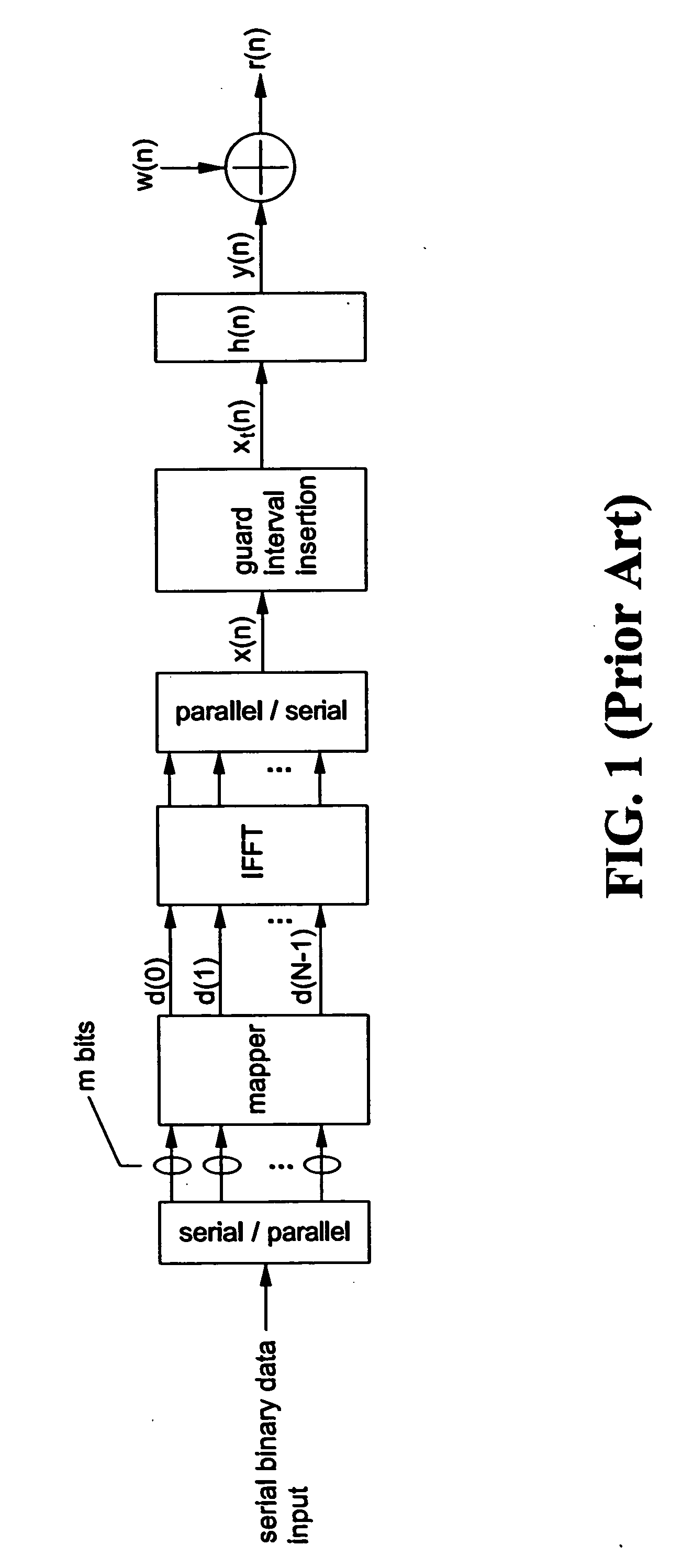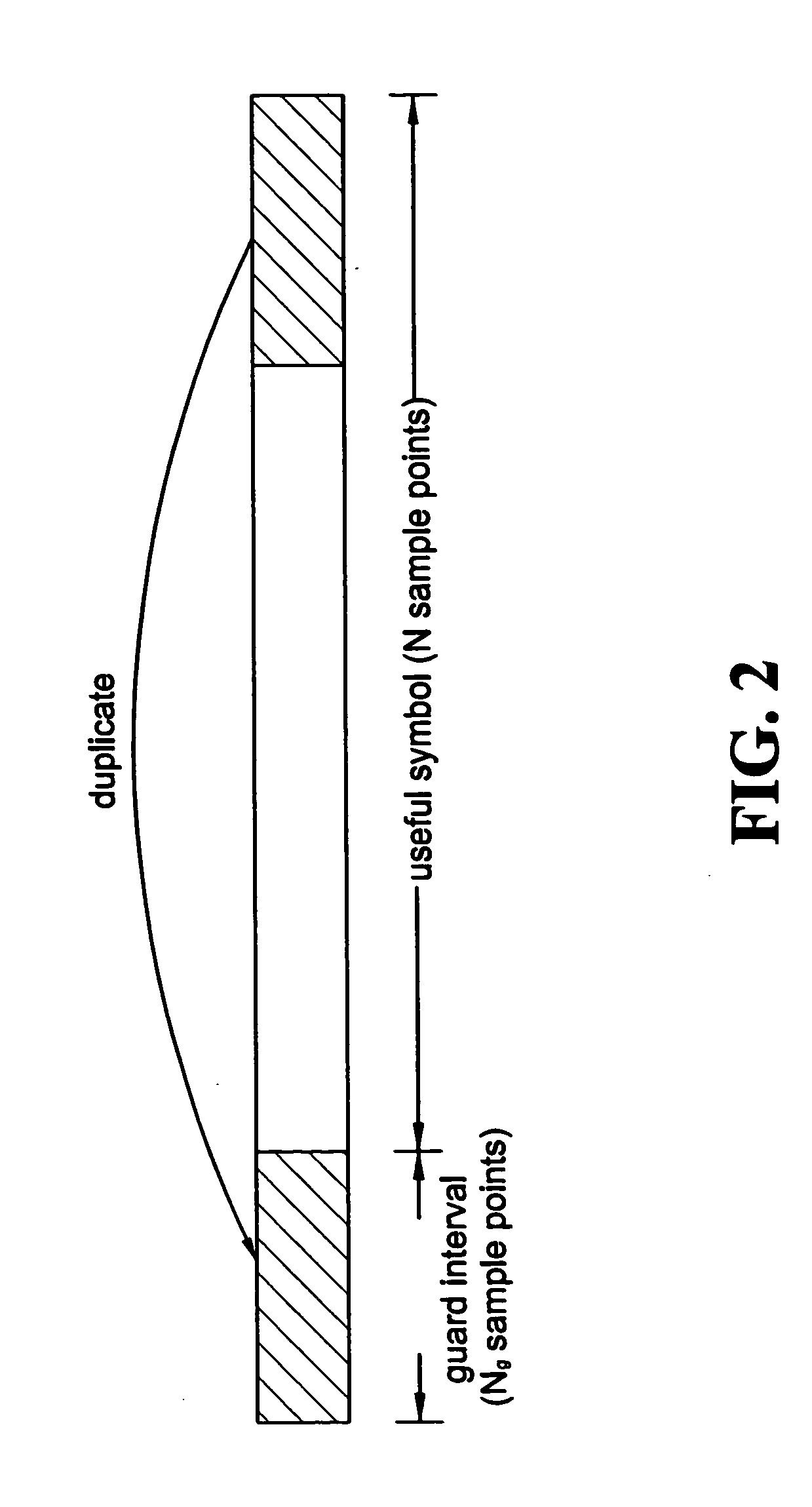Method and apparatus for synchronization of the OFDM systems
a technology synchronization, applied in the field of synchronization of orthogonal frequency division multiplexing (ofdm) systems, can solve the problems of severe inter-symbol interference, inefficient transmission of high-rate data for using this type of communication system, and inability to meet the needs of high data ra
- Summary
- Abstract
- Description
- Claims
- Application Information
AI Technical Summary
Benefits of technology
Problems solved by technology
Method used
Image
Examples
Embodiment Construction
[0034]FIG. 3 is a block diagram of the synchronization method and apparatus for the OFDM system. As shown in FIG. 3, the method can be divided into three major parts: delay conjugate multiplication module 301, phase processor 302 and edge detector 303.
[0035] The first part is to perform the delay conjugate multiplication module for the received signal r(n), pass through the first symbol-by-symbol average operation 301a, and use a phase calculator 301b to obtain the normalized phase signal θ1(n). The delay conjugate multiplication module that calculates the product of the received signal and its N-sample-delayed and conjugate version is based on the cyclic prefix characteristic of the guard interval. The symbol-by-symbol average operation 301a is used to reduce the noise effects. The symbol-by-symbol average operation 301a, the cyclic prefix characteristics of the guard interval, and the definition of ISI-free region will be described as below.
[0036] Based on the present invention,...
PUM
 Login to View More
Login to View More Abstract
Description
Claims
Application Information
 Login to View More
Login to View More - R&D
- Intellectual Property
- Life Sciences
- Materials
- Tech Scout
- Unparalleled Data Quality
- Higher Quality Content
- 60% Fewer Hallucinations
Browse by: Latest US Patents, China's latest patents, Technical Efficacy Thesaurus, Application Domain, Technology Topic, Popular Technical Reports.
© 2025 PatSnap. All rights reserved.Legal|Privacy policy|Modern Slavery Act Transparency Statement|Sitemap|About US| Contact US: help@patsnap.com



